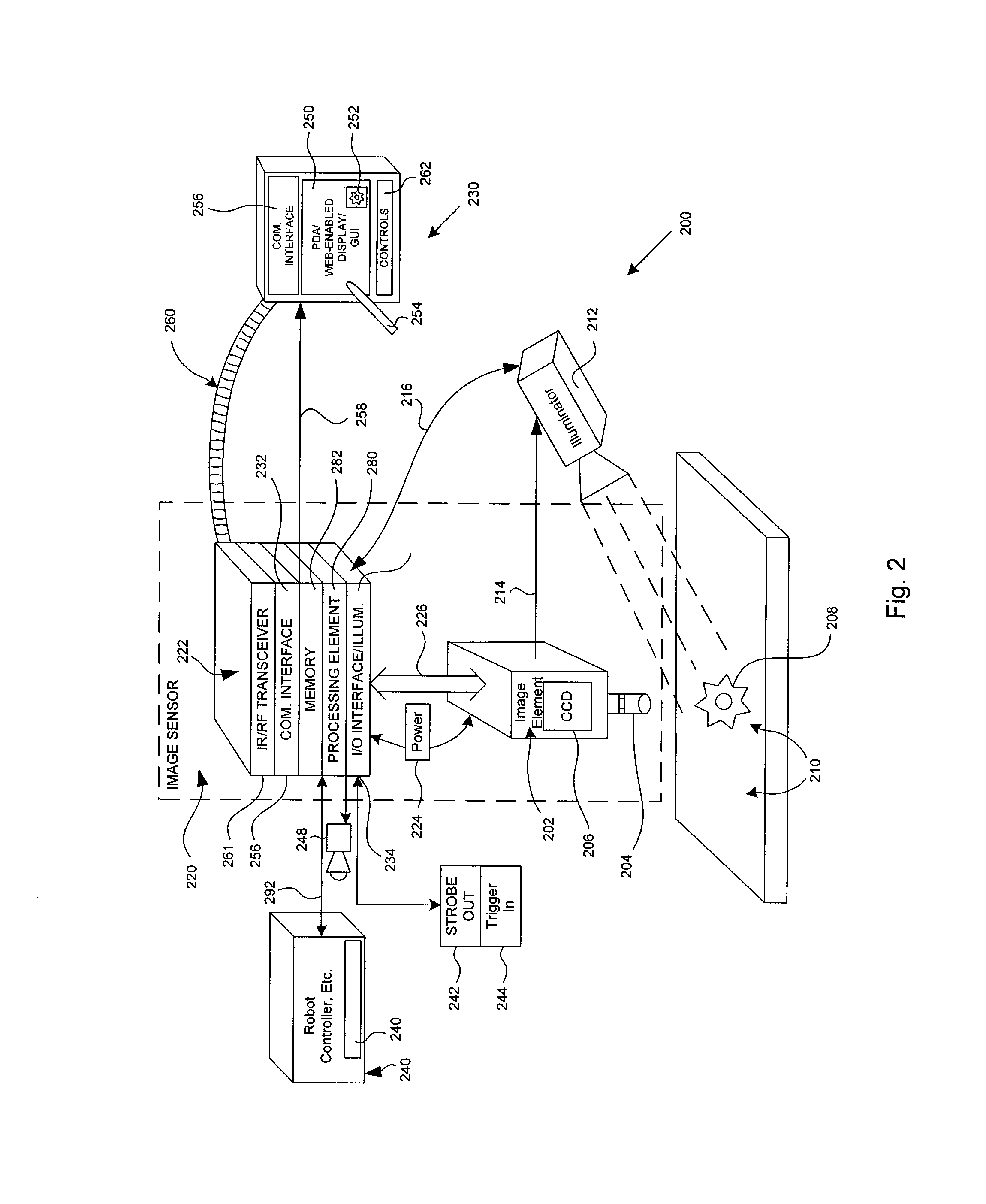Human/machine interface for a machine vision sensor and method for installing and operating the same
- Summary
- Abstract
- Description
- Claims
- Application Information
AI Technical Summary
Benefits of technology
Problems solved by technology
Method used
Image
Examples
Embodiment Construction
[0029]I. System Overview
[0030]FIG. 2 shows an illustrative embodiment of a machine vision system (MVS) 200 according to this invention. The MVS includes an image element 202 having a lens 204 with variable zoom and focus / aperture setting, and an electro-optical pickup (CCD) 206 for generating an of image signal of an object (the exemplary gear) 208 within the relevant field of view within the viewing area 210. A framegrabber or similar image capture device can also be included within the image element. An optional illuminator 212 for directing light at the object 208 and viewing area 210 is provided. A variety of types of illuminators (e.g. direct, indirect, backlight) can be employed. Likewise the positioning and number of illuminators is highly variable. Such illuminators can be integral with the image element 202 and powered by it as shown by the direct connection 214. Alternatively, the illuminator can be controlled and / or powered via an I / O interface via the connection 216. Thi...
PUM
 Login to View More
Login to View More Abstract
Description
Claims
Application Information
 Login to View More
Login to View More - R&D
- Intellectual Property
- Life Sciences
- Materials
- Tech Scout
- Unparalleled Data Quality
- Higher Quality Content
- 60% Fewer Hallucinations
Browse by: Latest US Patents, China's latest patents, Technical Efficacy Thesaurus, Application Domain, Technology Topic, Popular Technical Reports.
© 2025 PatSnap. All rights reserved.Legal|Privacy policy|Modern Slavery Act Transparency Statement|Sitemap|About US| Contact US: help@patsnap.com



